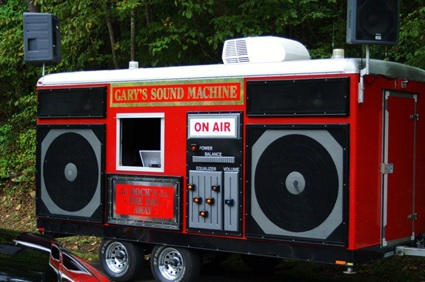FRANKFORT, Ky. – Research indicates a condition similar to “the bends” in divers likely played a role in the deaths of hundreds of thousands of Asian carp in two western Kentucky rivers last month.
The die-off of invasive silver carp happened in the Cumberland River below Lake Barkley dam and Tennessee River below Kentucky Lake dam.
“Preliminary results show they’ve got bubbles in the gills,” said Aquatic Nuisance Species Biologist Paul Wilkes of the Kentucky Department of Fish and Wildlife Resources. “You can see it very clearly.” Gas bubble disease can occur in water supersaturated with dissolved gases, and biologists believe it is a contributing factor in this case.
“Gas supersaturation is something that can happen below dams,” Wilkes said. “When a fish is breathing this water with gas supersaturation it essentially causes an air embolism in the gill, which is similar to a diver getting the bends. A gas bubble will get trapped in the gill tissue of a fish and prevent blood circulation.”
Biologists returned to the impacted areas May 8 to collect dying silver carp, a non-native species that threatens the well-being of native fish and mussels by over-harvesting plankton.
Tissue samples taken from those fish are being processed by staff from the U.S. Fish and Wildlife Service’s Warm Springs Fish Health Center in Warm Springs, Ga. and the U.S. Geological Survey. Researchers are looking for evidence of bacterial, viral and fungal infections. Kentucky State University previously conducted disease testing on specimens collected after the fish kill was first discovered April 23.
“When I say that gas supersaturation played a role, it was likely causing some of the scarring and open wounds we’ve seen on the fish,” Wilkes said. “It’s also likely that secondary infections were setting in and causing a lot of the ulcerations and other tissue erosion that you’re seeing on the fish.”
Multiple agencies are assisting the Kentucky Fish and Wildlife with the investigation, including the Illinois Department of Natural Resources, U.S. Fish and Wildlife’s Carterville Fish and Wildlife Conservation Office in Marion, Ill. and Warm Springs Fish Health Center.
“There’s national interest in Asian carp for obvious reasons and these agencies jumped on board,” Wilkes said. “This is a big team effort. We needed help and people from other agencies were ready to pitch in and give us a hand.”
Kentucky Fish and Wildlife has created a webpage devoted to the Asian carp fish kill. It can be found online at fw.ky.gov. Click on the “Fish” tab, choose “More” from the dropdown menu, and then “Kentucky and Barkley Lake Asian Carp Fish Kill.” The page will be updated as test results become available.









